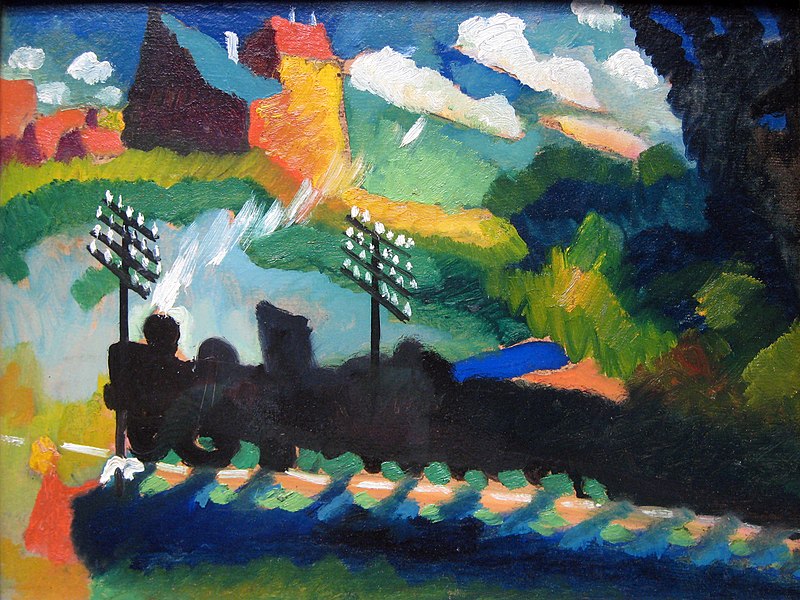Abstract art emerged in the early 20th century as a radical departure from traditional representational art. It challenged the idea that art had to represent the visible world, instead focusing on the power of color, line, and form to convey emotion and ideas. This revolutionary movement was led by artists such as Wassily Kandinsky, Piet Mondrian, and Kazimir Malevich, who continue to inspire contemporary artists today.

Kandinsky: Pioneer of Abstract Art
Wassily Kandinsky, a painter and art theorist, is often considered the father of contemporary abstract art. He believed that color and form could evoke spiritual and emotional experiences in the viewer, independent of any representational subject matter. His early works were influenced by the Fauvist and Expressionist movements, but he eventually developed his own unique style, characterized by bold, geometric shapes and vibrant colors. Kandinsky’s most famous work is perhaps “Composition VII,” a large canvas filled with swirling lines and shapes in a riot of colors. The painting is often interpreted as a representation of the chaos and destruction of World War I, but Kandinsky himself believed that it represented the triumph of the human spirit over adversity. Today, Kandinsky’s legacy lives on in the work of contemporary artists such as Mark Rothko and Barnett Newman, who were also interested in the spiritual and emotional power of color and form.
Mondrian: Reducing Art to its Essential Elements
Piet Mondrian, a Dutch painter, was another pioneer of abstract art. His style was characterized by simple geometric forms, such as squares and rectangles, and primary colors. He believed that by reducing art to its most basic elements, he could create a universal language of form that could communicate across cultures and time periods. Mondrian’s most famous works are his “Composition” series, which feature a grid of black lines filled with blocks of primary colors. These paintings are often seen as a representation of the rational order of the modern world, but they also convey a sense of spiritual harmony and balance. Today, Mondrian’s influence can be seen in the work of minimalist and conceptual artists such as Sol LeWitt and Dan Flavin, who also sought to create art that was stripped down to its essential elements.
Malevich: The Birth of Suprematism
Kazimir Malevich, a Russian artist, is best known for his creation of Suprematism, a movement that rejected representational art in favor of pure geometric forms. His most famous work is “Black Square,” a painting of a black square on a white background. Malevich believed that this painting represented the zero point of painting, from which all other possibilities could emerge. Malevich’s work had a profound impact on the development of abstract art, and his ideas continue to inspire artists today. His emphasis on pure form and color, divorced from any representational subject matter, laid the groundwork for the development of abstract expressionism and other forms of non-objective art.
Conclusion
The legacy of Kandinsky, Mondrian, and Malevich can be seen in the work of contemporary artists across a wide range of styles and movements. From the spiritual and emotional power of color and form, to the reduction of art to its essential elements, to the rejection of representational art in favor of pure abstraction, these artists continue to inspire new generations of artists to push the boundaries of what art can be. Their legacy reminds us that art is not just about representing the visible world, but also about exploring the
